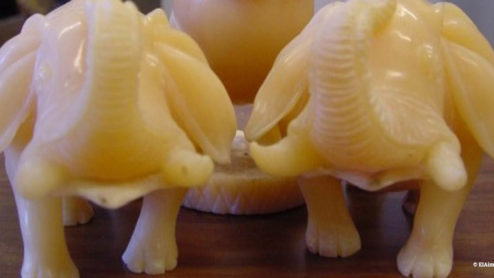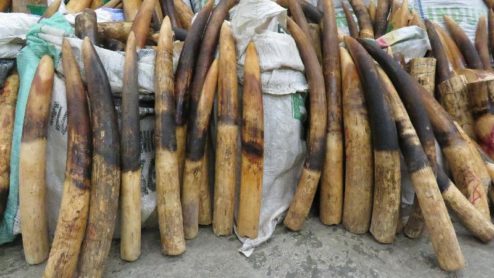Fresh bid to revive global ivory trade with a ‘one-off’ sale is likely to drive elephant poaching surge
A new attempt by several Southern African nations to reopen the global ivory trade via another ‘one-off’ sale of stockpiled tusks could mean disaster for threatened elephants.
From Monday (23 May), Zimbabwe will host a four-day Elephant Summit in Hwange National Park to rally support to restart the international ivory trade ahead of the 19th meeting of the Conference of Parties (CoP19) to the Convention on International Trade in Endangered Species (CITES) in November this year.
Representatives of 14 African countries as well as from China and Japan, two large consumer markets of ivory, are expected to attend the Summit, which has as its goal the development of a ‘common stance’ among African nations to restart trade.
EIA and 49 other leading organisations committed to biodiversity conservation have today released a joint statement condemning the move and urging the international community and policymakers to resist it.
EIA Senior Wildlife Campaigner Lindsey Smith said: “Not surprisingly, invitations to this meeting have not been extended to the majority of African elephant range states which have repeatedly opposed restarting ivory trade.
“The previous and supposedly ‘one-off’ sales of stockpiled ivory proved to be an unmitigated disaster for elephants, driving fresh consumer demand and providing the perfect cover behind which to launder poached ivory.
“In light of the current global biodiversity crisis, we simply cannot afford to repeat the mistakes of the past by restarting ivory trade.”
African elephants are closer to extinction than previously understood. In 2021, the International Union for Conservation of Nature (IUCN) Red List assessed the African forest elephant (Loxodonta cyclotis) as Critically Endangered and the African savanna elephant (Loxodonta africana) as Endangered. The main threats to this iconic, keystone species’ survival are poaching for ivory and habitat loss, both of which continue at present.
Smith added: “The meeting in Zimbabwe is already sending a dangerous signal to poachers and criminal syndicates that elephants are mere commodities and ivory trade could be resumed, heightening the threat to the species.”
International commercial ivory trade was outlawed in 1989 under CITES, but the ban was undermined by two CITES-authorised ‘one-off’ sales in 1999 and 2008 which resulted in a sharp escalation in the illegal killing and poaching of elephants across Africa to supply the resurgence of a black market for illicit ivory, undercutting legal markets, especially in China.
An undercover EIA’s investigation in mainland China in 2012 found up to 90 per cent of the ivory available on the ‘legal’ market was derived from illegal sources, which led the country to close its legal market in 2017. China’s decision to close its domestic market has since been hailed as a significant conservation gain for elephant conservation.
CITES has since acknowledged that legal domestic markets can increase the risk to elephant populations and local communities due to the opportunities they create for the laundering of illegal ivory and in stimulating demand.
Any country now wishing to sell ivory or purchase it would have to leave CITES to do so or find itself in serious contravention of its legal obligations, which could result in trade sanctions and economic consequences – Southern African countries stand to lose much more than just their reputations if they choose to abandon CITES.





